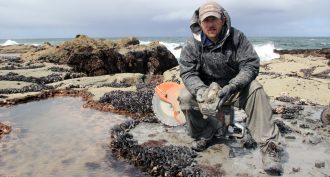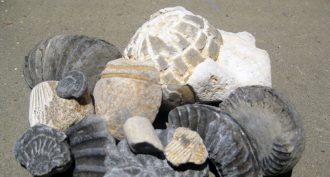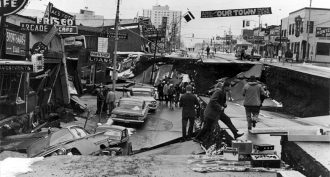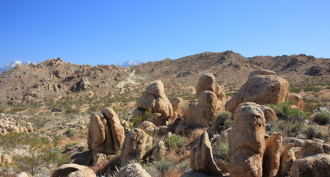MS-ESS2-3
Analyze and interpret data on the distribution of fossils and rocks, continental shapes, and seafloor structures to provide evidence of the past plate motions.
-
 Fossils
FossilsFossil hunting can start as child’s play
Paleontology isn’t just for professionals. You don’t even need to be a teen to sometimes make startling — and scientifically important — contributions.
-
 Fossils
FossilsExplainer: How a fossil forms
Minerals can replace any bone, shell or once-living tissue and also fill in the spaces between these hard parts, birthing a fossil.
-
 Earth
EarthThe quake that shook up geology
North America’s biggest earthquake struck 50 years ago. Here’s what science has learned about Earth since the 1964 Great Alaskan Earthquake.
By Beth Geiger -
 Earth
EarthBig rocks’ balancing acts
Scientists study how balanced boulders resist falling over — and what that may say about earthquakes.
By Douglas Fox -
 Earth
EarthDigging into a tsunami disaster
A powerful earthquake under the Indian Ocean changed Earth's surface and spin.
By Emily Sohn -
 Earth
EarthDeep drilling at sea
Drilling holes deep into the seafloor unveils the ocean's past and hints at Earth's future.
-
 Humans
HumansA human migration fueled by dung?
When people crossed from Asia to the Americas thousands of years ago, burning dung may have kept them warm.
By Emily Sohn